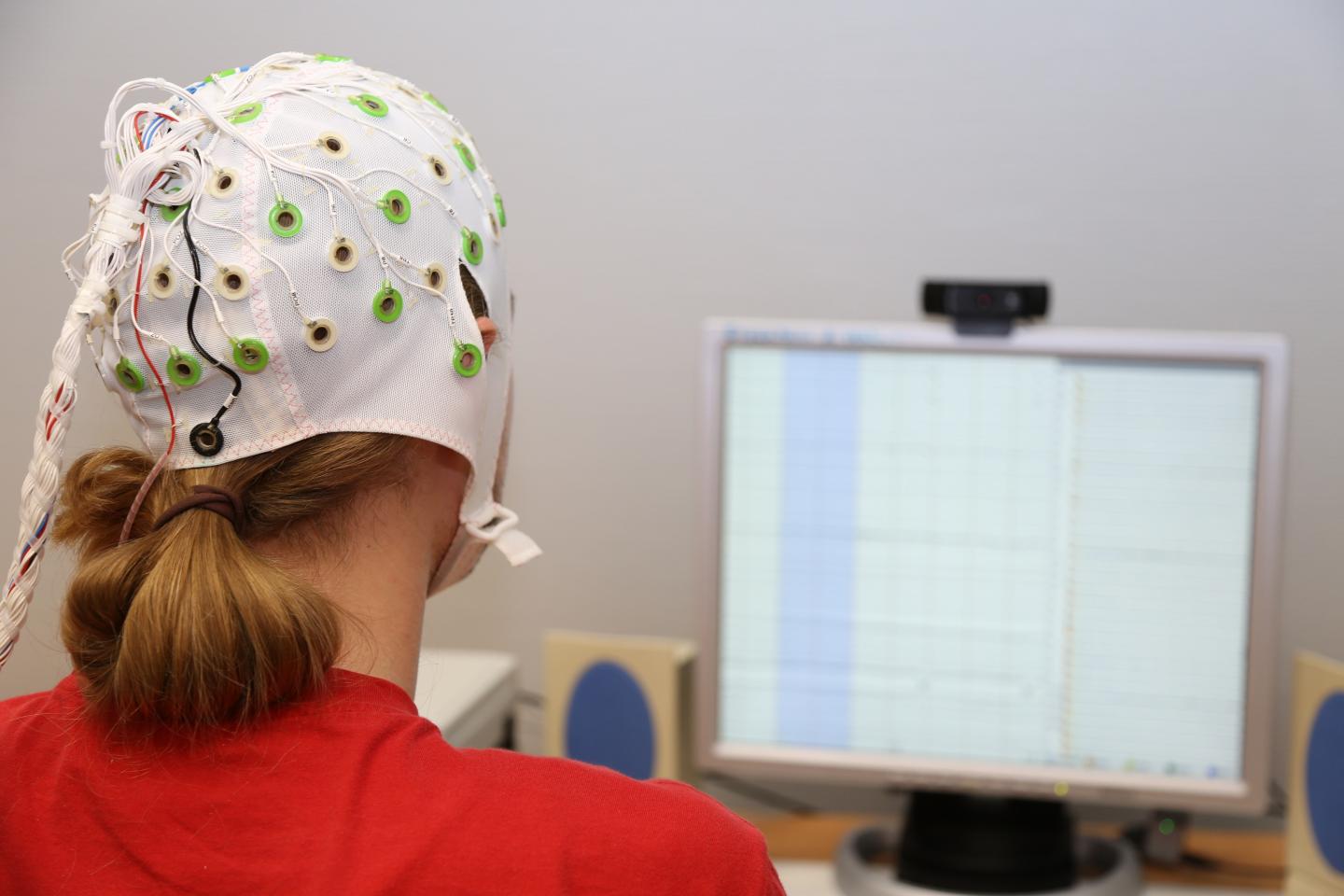Do we have free will?
January 8, 2016

Human “duels” against a brain-computer interface (BCI) in an experiment. (credit: Carsten Bogler/Charité)
It’s a question that’s been debated by philosophers for centuries. Now neuroscientists from Charité –Universitätsmedizin Berlin have run an experiment to find out, using a “duel” game between human and brain-computer interface (BCI).
As KurzweilAI reported last year:
In the early 1980s, University of California, San Francisco neuroscientist Benjamin Libet conducted an experiment to assess the nature of free will. Subjects hooked up to an electroencephalogram (EEG) were asked to push a button whenever they liked. They were also asked to note the precise time that they first became aware of the wish or urge to move.
Libet’s experiments showed that distinctive “readiness potential” brain activity began, on average, several seconds before subjects became aware that they planned to move. Libet concluded that the desire to move arose unconsciously, and “free will” could instead only come in the form of a conscious veto of what he called “free won’t.”
The Charité’s Bernstein Center for Computational Neuroscience researchers have now created an experiment to test the “free won’t” part. Using state-of-the-art measurement techniques, the researchers tested whether or not after the readiness potential (RP) for a movement has already been triggered, people are able to stop planned movements (under conscious control).
The “point of no return”
The researchers asked study participants to participate in a “duel” game with a computer and monitored their brain waves using electroencephalography (EEG). A specially-trained computer was then tasked with using this EEG data to predict when a subject would move (the aim: out-maneuver the player). The researchers manipulated the outcome of the game in favor of the computer as soon as brain wave measurements indicated that the player was about to move.
The idea was that if subjects were able to evade being predicted, this would be evidence that subjects could control their actions for much longer than previously thought.
The researchers discovered that subjects could achieve that, but that there‘s a “point of no return” in the decision-making process [at about 200 milliseconds before movement onset], after which cancellation of movement is no longer possible. “A person’s decisions are not at the mercy of unconscious and early brain waves. They are able to actively intervene in the decision-making process and interrupt a movement,” says Prof. John-Dylan Haynes, PhD., research-team leader.
Further studies are planned to investigate more complex decision-making processes.
Technische Universität Berlin researchers were also involved in the study. The study results have been published in an open-access paper in the journal PNAS.
UPDATE: 200 milliseconds before movement onset, not after readiness potential.
Abstract of The point of no return in vetoing self-initiated movements
In humans, spontaneous movements are often preceded by early brain signals. One such signal is the readiness potential (RP) that gradually arises within the last second preceding a movement. An important question is whether people are able to cancel movements after the elicitation of such RPs, and if so until which point in time. Here, subjects played a game where they tried to press a button to earn points in a challenge with a brain–computer interface (BCI) that had been trained to detect their RPs in real time and to emit stop signals. Our data suggest that subjects can still veto a movement even after the onset of the RP. Cancellation of movements was possible if stop signals occurred earlier than 200 ms before movement onset, thus constituting a point of no return.